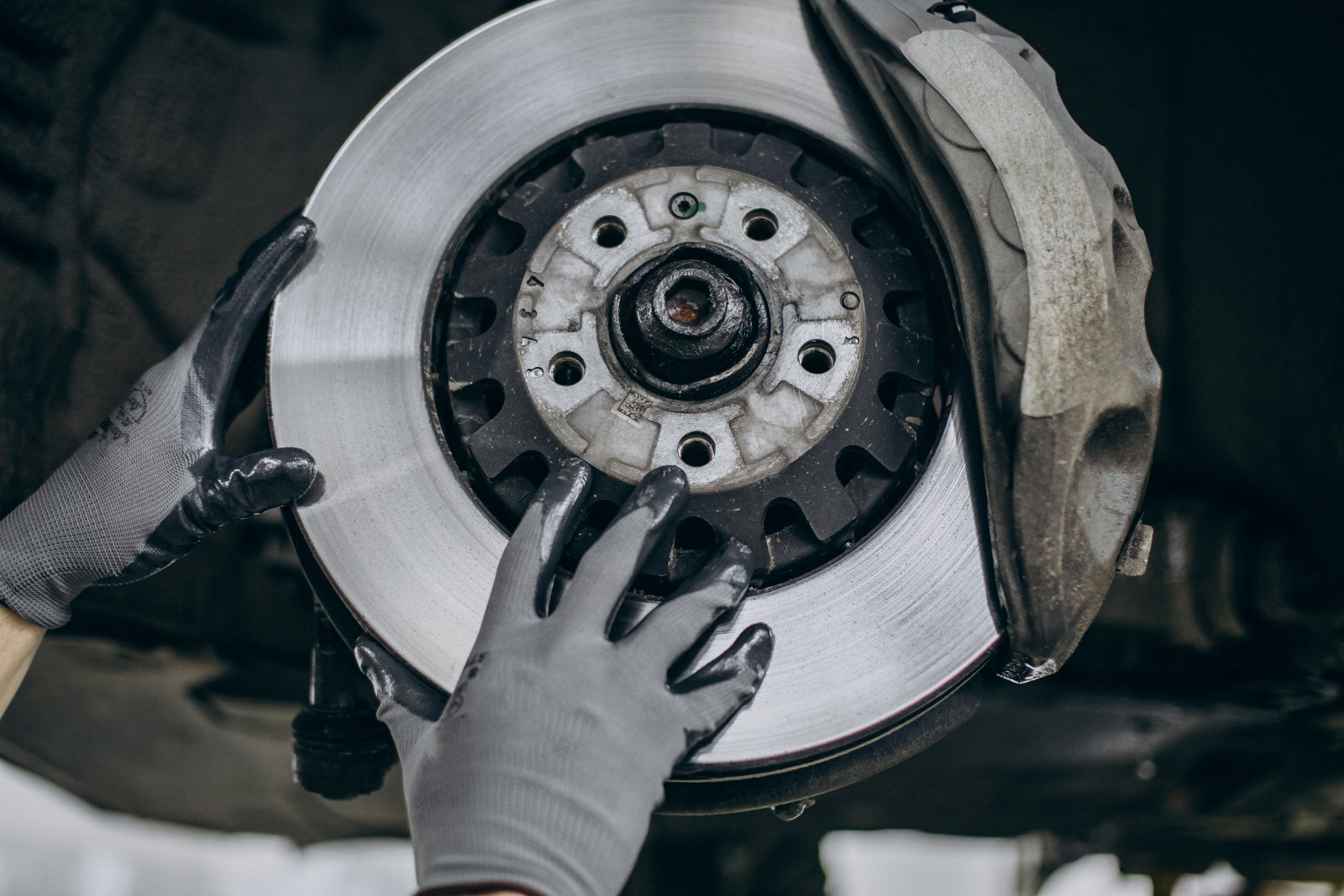What is the importance of brake testing? MOT Garage Watford provide car brake repair & brake pad replacement throughout Watford And Hertfordshire. We look at a brake test report tells you and show examples of car brake problems.
The Importance of Brake Testing
Brakes are essential for safe vehicle operation, but they experience wear and tear over time. Regular brake testing is crucial to maintain performance and ensure road safety.
It is recommended to check your vehicle's brakes every 6 to 12 months, examining brake lining wear, fluid level, rotor condition, hose and line wear, and brake lights. Test driving helps identify potential issues.
Pay attention to warning signs like swerving, unusual noises, dash warning lights, brake grabbing, weak or hard pedal feel, vibration, or scratching sounds.
Factors affecting brake wear include driving habits, conditions, vehicle type, and brake pad quality. Timely inspections and repairs prevent hazards and costly damages. Neglecting brake maintenance can lead to metal-on-metal contact, compromising safety and causing extensive repairs.
A well-functioning brake system ensures control in diverse driving conditions. Recognising signs of brake system problems allows proactive maintenance. Regular brake testing contributes to a safer driving experience for all road users.
In conclusion, regular brake testing is vital for safe vehicle operation. Check your brakes periodically, considering factors affecting wear. Addressing issues promptly prevents accidents and costly repairs. Prioritise brake testing to enjoy a secure driving experience.
What does a brake test report tell you?
A brake test report provides crucial information about the condition of your vehicle's braking system, allowing you to assess its safety and performance. Understanding the details within the report is essential for identifying possible braking defects and ensuring overall road safety.
The report may reveal potential issues, such as an imbalance of 26% in the axle 2 service brake on the offside, indicating that the offside wheel does not lock compared to the nearside brake effort. Similarly, an axle 3 imbalance of 29% without any wheels locking may suggest an issue with the offside brake that requires further investigation.
For vehicles with split brake systems designated as secondary brakes, the report may provide efficiency readings, although failures in these brakes can be disregarded. However, it is important to consider that such failures may affect the overall service braking aspect and necessitate additional attention.
Park brake efficiencies are also assessed and tested against either the design gross vehicle weight (16%) or the design gross train weight (12%). These efficiency figures ensure that the parking brake meets the requirements based on the higher weight figure.
Maintaining accurate testing equipment, such as roller brake testers, is crucial to obtain reliable readings. Regular maintenance and calibration of the equipment ensure the accuracy of the brake test report.
In conclusion, brake test reports provide vital information about the condition of your vehicle's braking system. It is essential not to ignore any issues highlighted in the report and to investigate and address them promptly. By taking the necessary measures to maintain optimal brake performance, you can ensure the safety of your vehicle and its occupants on the road.

Examples of car brake problems
Brakes are a critical component of a vehicle's safety system, and any problems with the braking system can pose significant risks. Understanding common brake problems is essential for identifying potential defects and taking appropriate measures to address them. In this section, we will explore examples of car brake problems that drivers should be aware of to ensure safe and reliable vehicle operation.
Possible Braking Defects
One common brake problem occurs when the axle 2 service brake on the offside shows an imbalance of 26% compared to the nearside brake effort, and the offside wheel fails to lock. This significant imbalance indicates a potential braking defect that requires immediate investigation.
Such an issue could result from uneven brake pad wear, hydraulic system problems, or a malfunctioning calliper. It is crucial to diagnose and rectify the issue promptly to restore optimal brake performance and ensure the safety of the vehicle and its occupants.
Offside Brake Issue
Another brake problem to be cautious of is an imbalance in axle 3, where there is a 29% imbalance without any wheels locking. Although this imbalance does not exceed the limit of 30%, it indicates an issue with the offside brake that necessitates further investigation.
Potential causes for this problem include worn brake pads, uneven rotor surfaces, or air in the brake lines. Addressing this problem promptly is vital to maintain the effectiveness of the braking system and ensuring safe vehicle operation.
Split Brake Systems
Certain vehicles are equipped with split brake systems, where the manufacturer designates one set of brakes as the secondary brake.
During a brake inspection, these secondary brakes are not fully assessed. However, the brake report may provide efficiency readings for these brakes. While failures in the secondary brake system can be disregarded, it is crucial to consider that such failures may impact the overall service braking aspect.
Therefore, it is recommended to thoroughly investigate any efficiency readings related to split brake systems to ensure comprehensive brake performance. Issues with the secondary brake system may include imbalanced braking force distribution or inadequate brake pad material. Professional evaluation and maintenance of split brake systems are necessary to ensure optimal performance and safety.
Other Brake Problems
Apart from the specific examples mentioned, several other brake problems may arise. These can include brake fluid leaks, worn brake hoses, faulty master cylinders, or problems with the anti-lock braking system (ABS). Brake fluid leaks can compromise the hydraulic pressure required for effective braking, while worn brake hoses may lead to decreased brake response.
Malfunctions in the master cylinder can result in a loss of braking power, and issues with the ABS can affect the vehicle's ability to stop safely on slippery or uneven surfaces. Prompt identification and resolution of these problems are crucial to maintaining the integrity and reliability of the braking system.

In all brake-related issues, seeking professional assistance from qualified mechanics or technicians is highly recommended. They have the expertise and knowledge to accurately diagnose and repair brake problems, ensuring the safety and optimal functioning of your vehicle's braking system.
Remember, regular brake testing, inspections, and proactive maintenance are essential to identify and address brake problems promptly.
Any signs of abnormal brake performance, such as squealing or grinding noises, vibrations, or a spongy brake pedal, should be taken seriously and investigated immediately. By prioritising the health and reliability of your brake system, you can ensure the safety of yourself, your passengers, and others on the road.
In conclusion, understanding common brake problems empowers drivers to recognise potential defects and take appropriate actions. From imbalances in brake force to issues with split brake systems and other malfunctions, addressing brake problems promptly is essential for safe and reliable vehicle operation.
Regular maintenance, adherence to recommended maintenance schedules, and professional assistance, when needed, are key to keeping your brakes in optimal condition and enjoying a smooth and secure driving experience.
If you require brake testing, car brake repair & brake pad replacement, choose a garage that you can trust. Follow the link below to contact a car engine diagnostics mechanic in Watford and Hertfordshire.


